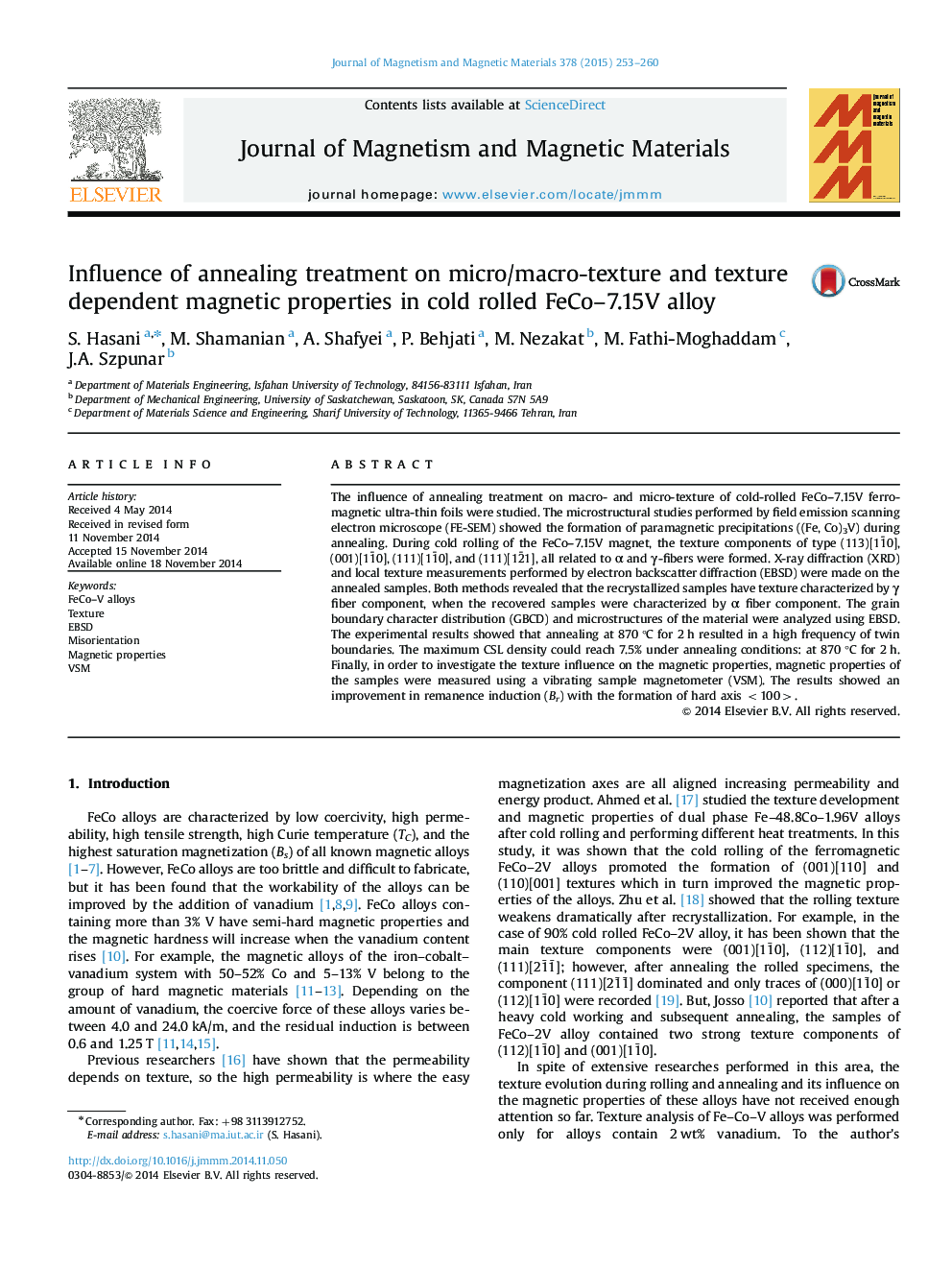| Article ID | Journal | Published Year | Pages | File Type |
|---|---|---|---|---|
| 1799314 | Journal of Magnetism and Magnetic Materials | 2015 | 8 Pages |
•This paper describes the macro- and micro-texture of Fe–Co–7.15V after rolling and annealing conditions.•The grain boundary character distribution (GBCD) and microstructures of the material were analyzed using EBSD.•The texture dependence magnetic properties of Fe–Co–7.15V were studied.
The influence of annealing treatment on macro- and micro-texture of cold-rolled FeCo–7.15V ferromagnetic ultra-thin foils were studied. The microstructural studies performed by field emission scanning electron microscope (FE-SEM) showed the formation of paramagnetic precipitations ((Fe, Co)3V) during annealing. During cold rolling of the FeCo–7.15V magnet, the texture components of type (113)[11¯0], (001)[11¯0], (111)[11¯0], and (111)[12¯1], all related to α and γ-fibers were formed. X-ray diffraction (XRD) and local texture measurements performed by electron backscatter diffraction (EBSD) were made on the annealed samples. Both methods revealed that the recrystallized samples have texture characterized by γ fiber component, when the recovered samples were characterized by α fiber component. The grain boundary character distribution (GBCD) and microstructures of the material were analyzed using EBSD. The experimental results showed that annealing at 870 °C for 2 h resulted in a high frequency of twin boundaries. The maximum CSL density could reach 7.5% under annealing conditions: at 870 °C for 2 h. Finally, in order to investigate the texture influence on the magnetic properties, magnetic properties of the samples were measured using a vibrating sample magnetometer (VSM). The results showed an improvement in remanence induction (Br) with the formation of hard axis <100>.
